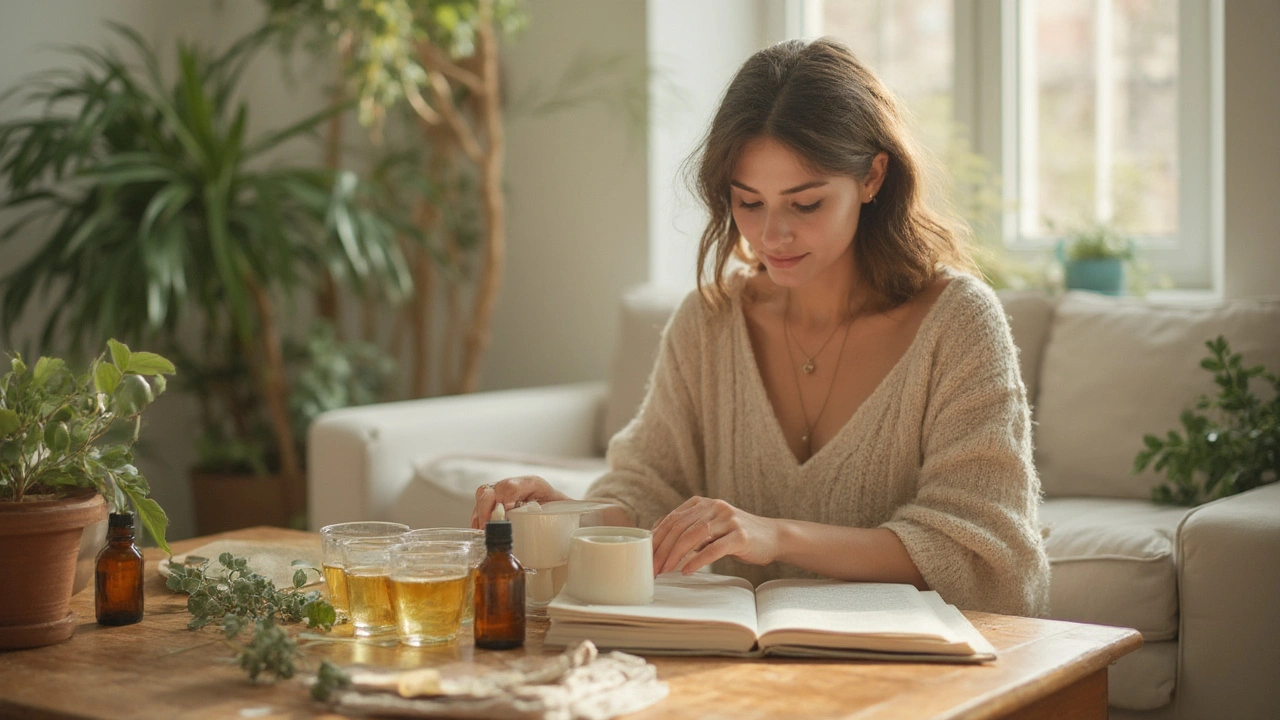Vivid purple circles on swimmers’ backs—yeah, maybe you’ve seen those at the Olympics or even at your local gym—and suddenly, everyone’s talking about cupping therapy again. It’s wild how a centuries-old tradition is now trending on TikTok, but there’s more behind this comeback than celebrity buzz or quirky photos. Turns out, those circular marks aren’t just for show. People—from stressed-out moms (hi, that’s me) to professional athletes—are turning to cupping because it actually helps. Skeptical? I was, too, until my sore shoulders felt reborn after a single session. So, what gives this ancient therapy its staying power?
What Exactly is Cupping Therapy and Where Did It Come From?
Cupping therapy isn’t just some trendy spa treatment; it’s a legit healing technique that pops up in Chinese, Egyptian, and Middle Eastern histories. Classic Chinese medicine texts describe using animal horns (yeah, actual horns) for pulling bad ‘wind’ out of the body thousands of years ago. Egyptians were into it, too, with Ebers Papyrus—one of the world’s oldest medical books—mentioning cupping for everything from fever to menstrual discomfort. Ancient Greeks like Hippocrates sang its praises. It wasn’t until glass cups, and now fancy silicone ones, came around that the process looked more like what you might see today.
Here’s how it works: a therapist pops a cup—glass, bamboo, or silicone—on your skin. They either heat the air inside or use a suction device to create a vacuum. This pulls your skin up into the cup. The key is that negative pressure (think: gentle pulling). Depending on technique, the therapist leaves the cup in place for five to fifteen minutes or slides it around with oil for a massage effect. That’s where you get those purple marks—little blood vessels breaking and new blood racing in to start repair work.
People used to rely on cupping to deal with “bad blood” and mysterious humors, but now we know more. While science hasn’t nailed down every reason, studies—like the systematic review published in the Journal of Traditional and Complementary Medicine (2023)—show it can help with muscle soreness, back pain, chronic tension, and even migraines. Apparently, nearly 60% of athletes in certain sports (swimming, track) have tried it at least once for recovery, according to the 2022 Sports Medicine Research survey. Whether you like faith in tradition or cold, hard stats, cupping sits at a sweet spot.
Why is Cupping Back in the Spotlight Now?
Let’s be real—most self-care fads fizzle out. So why is cupping everywhere? Blame the big names: Michael Phelps’ polka dot back at the 2016 Rio Olympics kicked off a new wave of curiosity. Social media played along, and suddenly wellness bloggers, TikTokers, and even soccer moms are talking about it. The interesting twist? It’s not just hype. Pain relief and faster recovery are things folks can actually feel—unlike some wellness trends where you’re basically paying for hope in a crystal vial.
Healthcare providers are paying attention, too, especially as people look to alternatives to pain pills and conventional physical therapy. The opioid crisis and rising costs of health care have led some doctors and clinics to suggest cupping as a “try this first” step—for certain types of chronic pain or post-workout soreness. Insurance doesn’t usually cover it (yet), but acupuncturists and licensed massage therapists often work it into sessions at a reasonable price. According to the American Massage Therapy Association, requests for bodywork therapies that include cupping have gone up by 35% in the past three years.
There’s also a comfort in hands-on therapies. After all the isolation during the pandemic, people are craving connection—even if it’s just laying on a table while someone puts cups on your back. It feels old-school but (ironically) fresh in our screen-heavy lives.

The Science and Sensation: How Does Cupping Actually Work?
This is where things get interesting—and a little bit geeky. When a cup suctions onto your skin, it pulls blood up to the surface. That sounds weird, but here’s the thing: it brings new blood and nutrients to tired spots and whisks away toxins (aka waste products your body wants to ditch after a workout or a long day of sitting). People say it feels like a massage in reverse. The sensation? Mild pressure, a little tingling, basically like your muscles are getting a gentle stretch from the inside out.
There’s research to back it up. A 2021 clinical trial in Germany showed that patients with chronic neck pain felt a 50% reduction in pain after just a few treatments. Another study from the National Institutes of Health tracked people with sore lower backs and found improved movement and reduced pain six weeks after cupping. It’s not magic, but it’s not placebo either. Your body actually responds by releasing endorphins—those are your natural feel-good chemicals, the ones that make you think you can, perhaps, face a Monday morning.
If you’re curious about the numbers, check this out:
| Condition | Reported Improvement After Cupping |
|---|---|
| Chronic Neck Pain | 50-60% |
| Lower Back Pain | 40-45% |
| Muscle Recovery (Athletes) | 55-70% |
| Migraines | 30-45% |
Note: Numbers are averages from peer-reviewed studies in the last five years.
What about safety? Cupping is considered pretty safe when done by a trained pro. Bruising is common—that’s normal, not a sign of damage. Other side effects are rare: maybe soreness, some redness, sometimes tiredness after the first session. Experts say don’t try intense cupping at home unless you actually know what you’re doing. Of course, certain folks—like pregnant women, people with blood disorders, or folks with thin/fragile skin—should definitely check with their doc before booking an appointment.
How to Try Cupping Therapy (and What to Expect)
So maybe you’re intrigued (or at least, not freaked out). What happens if you book a session?
- Find a professional. Look for someone licensed—ideally a massage therapist or acupuncturist with cupping therapy in their skillset. Some physical therapists offer it, too. Ask about their experience and ensure proper hygiene.
- Arrive hydrated and wear loose clothing. Drink water before and after—it helps your body process any toxins released. Loose clothing makes undressing easier, since cups usually go on your back, shoulders, or legs.
- Be ready for marks. The famous circles fade after three to ten days. Don’t schedule a session right before you hit the beach in a backless dress, unless you love the look.
- Speak up during your session. Tell your therapist how it feels—cupping shouldn’t feel sharp or intense. Mild pressure and warmth are normal, but pain is not.
- Rest up after. If you’re anything like me, you might feel relaxed or a little tired after your first session. Drink more water, avoid heavy workouts for a day, and listen to your body.
At home, some curious folks use silicone cups for self-massage (with oil), especially on legs or arms. Safety tip: skip the glass heated cups unless you’re trained—and never cup over major arteries, broken skin, or varicose veins. Even my stubbornly knotted shoulders benefit from a little DIY cupping now and then. It’s not a miracle cure, but hey, it’s more relief than you’ll get from scrolling wellness hacks on Pinterest.
Is cupping for everyone? Not really. People with certain health conditions shouldn’t try it without doctor approval. But for most, it’s low-risk and fits into a pack of wellness tools alongside stretching, massage, and, let’s be honest, the occasional chocolate-fueled Netflix binge. The thing that keeps cupping coming back? It’s simple, accessible, and it works just well enough that you’ll want to see those circles in the mirror again.
Whether you’re a runner, a parent juggling a toddler and a Zoom call, or someone whose desk job was invented by a medieval torturer, cupping therapy finally feels like a comeback act that actually deserves the applause. Next time you see bruised circles on someone’s back, don’t assume a run-in with an octopus; maybe they just found an old remedy that actually helps keep the aches at bay.

